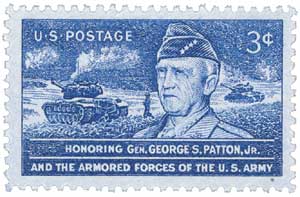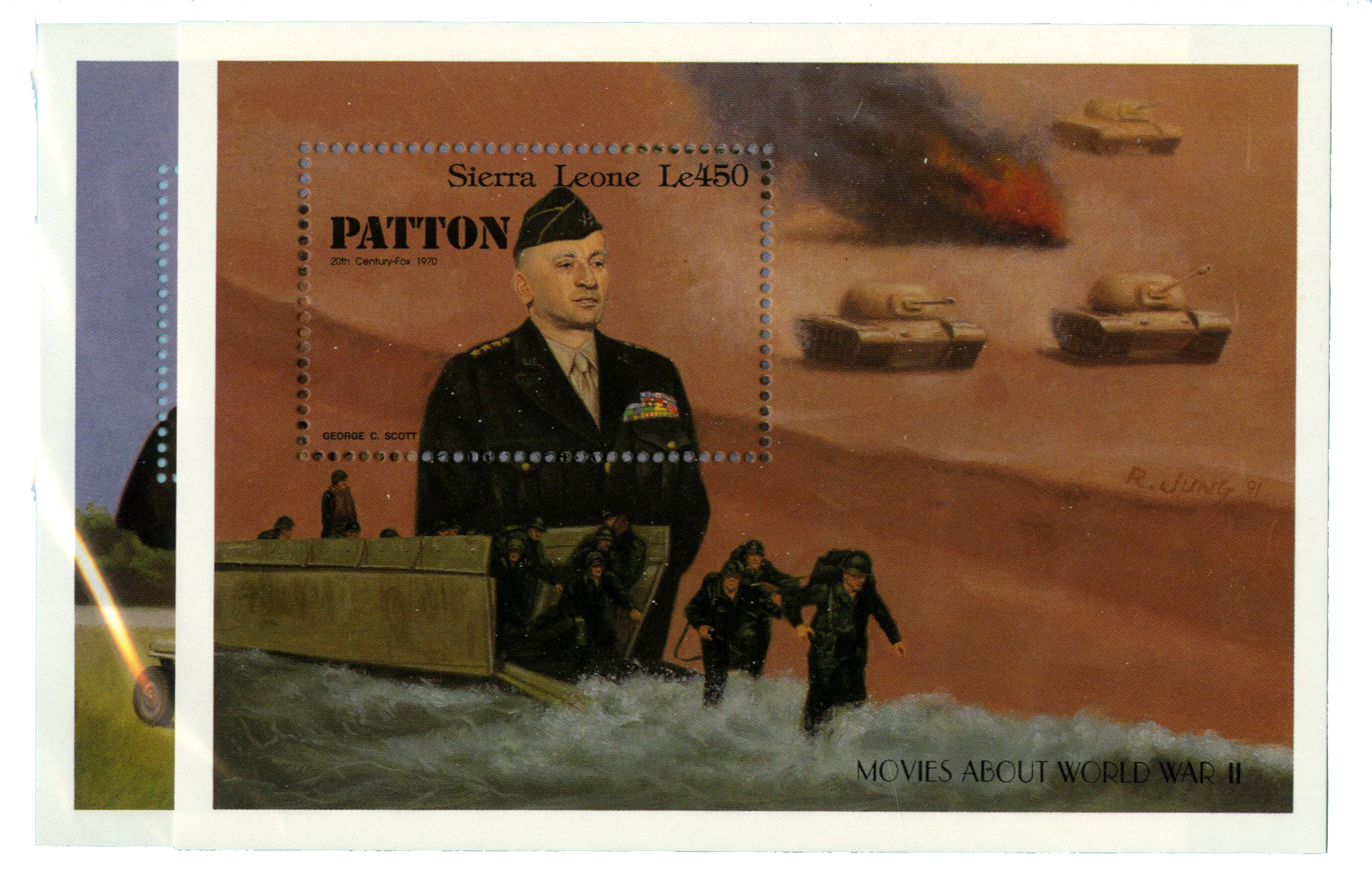
# 1026 - 1953 3¢ General George S. Patton, Jr.
3¢ General George S. Patton
City: Fort Knox, KY
Quantity: 114,789,600
Printed by: Bureau of Engraving and Printing
Printing Method: Rotary Press
Perforations: 11 x 10½
Color: Blue violet
Birth Of General George Patton
Patton belonged to a prominent military family, with ancestors participating in Revolutionary and Civil War battles. Though he had difficulty learning to read and write as a child, Patton soon became an avid reader with a determined interest in military history, particularly Julius Caesar, Joan of Arc, Napoleon Bonaparte, and family friend John S. Mosby (the “Gray Ghost” cavalry leader from the Civil War).
Following in his ancestors’ footsteps, Patton attended the Virginia Military Institute and West Point. He struggled with some of his academic classes but was proficient at military drills. He briefly played football but then found great success with the sword team and track and field. Patton was one of the school’s best swordsmen.
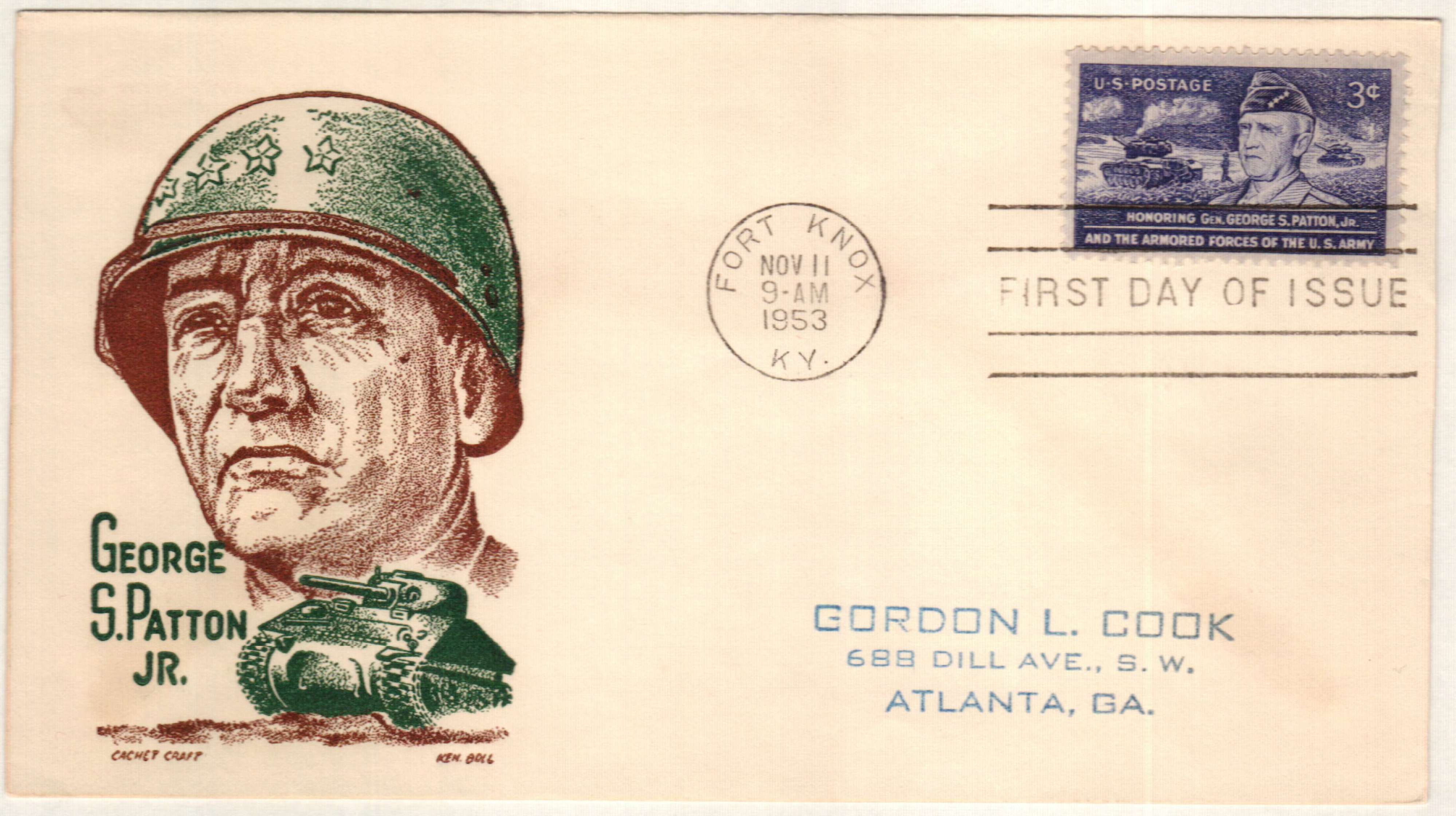
Patton graduated in the top half of his class in 1909 before beginning his service in Illinois and Virginia. In 1912, Patton was selected to join the US at the 1912 Olympic Games. He placed twenty-first on the pistol range, seventh in swimming, fourth in fencing, sixth in equestrian, and third in the footrace. He placed fifth overall and first among the non-Swedish athletes.
After the Olympics, Patton went to France to study fencing techniques. He returned to America and developed a new sword combat doctrine for the cavalry. Along with this, he designed a new saber, sometimes called the Patton sword. Soon Patton was the first Army officer to be dubbed “Master of the Sword.”
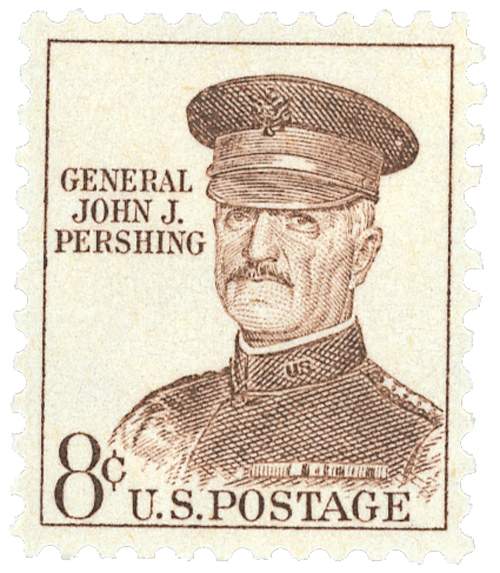
In 1915, Patton was assigned to the 8th Cavalry Regiment in Fort Bliss, Texas. Following the outbreak of hostilities with Pancho Villa’s forces, Patton personally appealed to General John J. Pershing to serve as his personal aide. Pershing was impressed and granted his wish. Patton worked closely with Pershing and served as his personal courier. In May 1916, Patton had his first taste of combat leading the first motorized attack in US warfare history against a group of Villa’s men. Patton soon earned national attention and the nickname “bandit killer,” as well as a promotion.
Patton was then assigned to oversee horse procurement for the Army after the Mexican Expedition. When it became clear that the US would intervene in World War I, Pershing picked Patton to serve as his aide again. Patton left for Europe in May 1917, arriving with the first wave of American Expeditionary Forces. Patton oversaw the training of US troops in Paris.
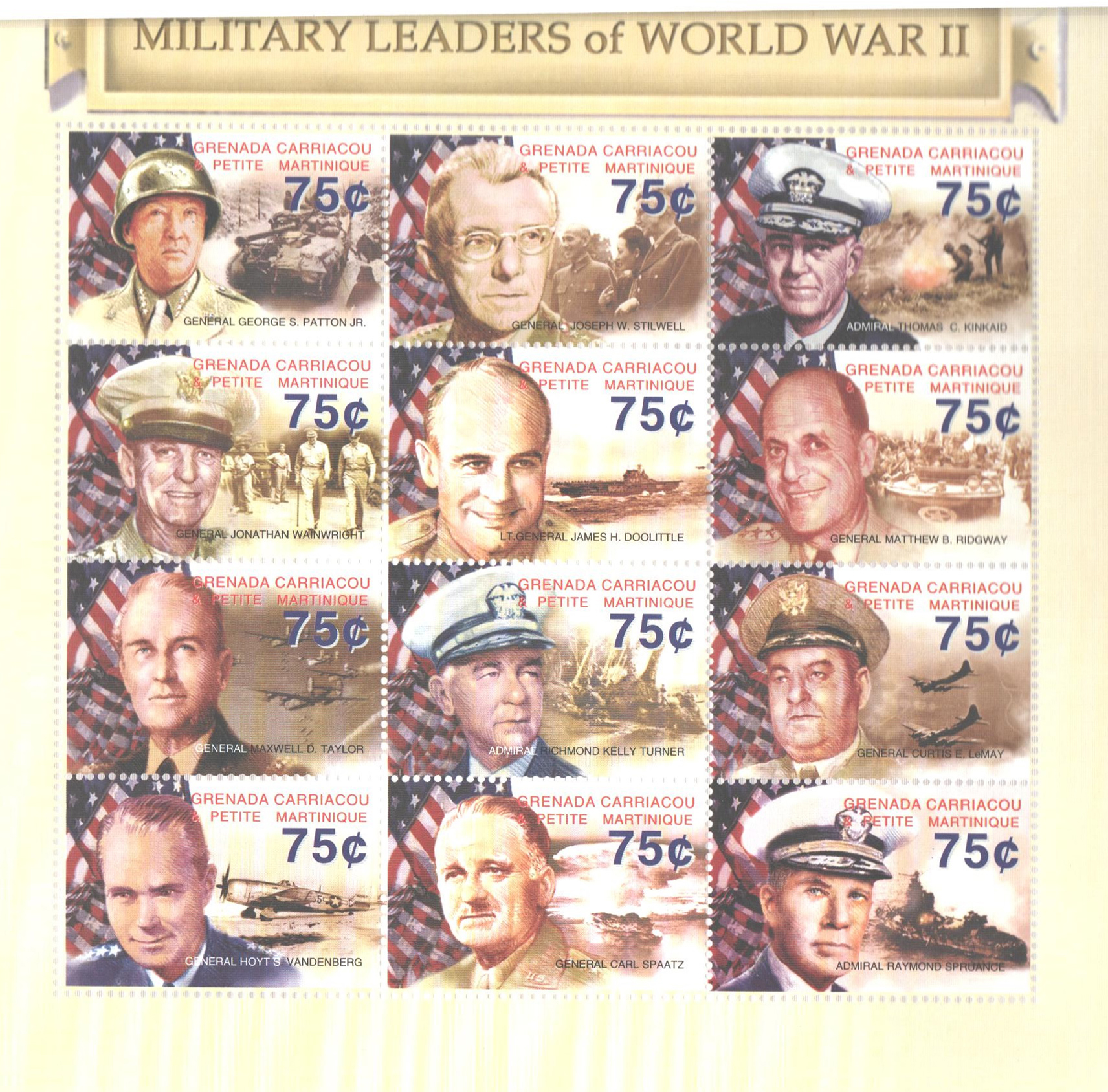
Patton soon developed an interest in tanks and in November 1917, was tasked with establishing the AEF Light Tank School. Promoted to lieutenant colonel in 1918, he took charge of the US 1st Provisional Tank Brigade. Patton led his men at the Battle of Saint-Mihiel and was known to ride on top of his tank to inspire the troops. He was wounded in battle in September 1918 and saw no further action during the war. However, Patton was awarded the Distinguished Service Cross and Medal as well as the Purple Heart (after it was created in 1932).
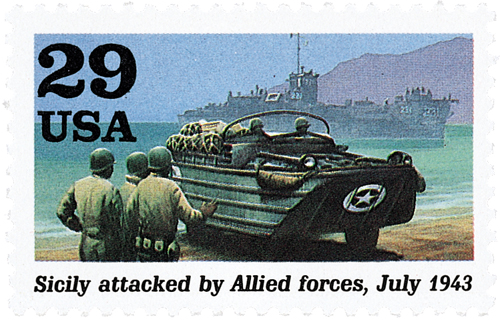
In the interwar years, Patton served in various tank and cavalry units, eventually reaching the rank of colonel. Following the Japanese attack on Pearl Harbor, Patton commanded the 1st and 2nd Armored Divisions before traveling to North Africa to lead forces there. His philosophy, “We shall attack and attack until we are exhausted, and then we shall attack again,” earned him the nickname “Old Blood and Guts.” Patton’s firm leadership led to the first significant American victory against the Nazis in 1943. He went on to plan the invasion of Sicily and led the 3rd Army during Operation Overlord. Patton helped thwart the German attack at the Battle of the Bulge, capturing 10,000 miles of territory and liberating the country from Nazi rule.
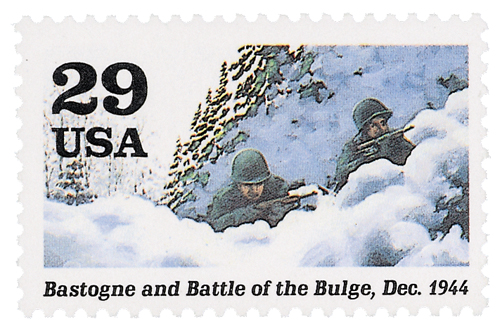
Following Germany’s surrender at the end of the war, Patton publicly criticized the Allies’ de-Nazification policies and was ultimately removed from command. On December 8, 1945, Patton went with his chief of staff, Hobart Gay, for a pheasant-hunting trip. As he rode, he commented, “How awful war is. Think of the waste.” Then, moments later his car hit an Army truck. While the other passengers in the car were only slightly hurt, Patton hit his head and was paralyzed. He spent the next 12 days in the hospital and was told he’d never ride a horse again, to which he responded, “This is a hell of a way to die.” Passing in his sleep on the afternoon of December 21, 1945, he was then buried in the Luxembourg American Cemetery per his wishes. He wanted to be buried with his men.
3¢ General George S. Patton
City: Fort Knox, KY
Quantity: 114,789,600
Printed by: Bureau of Engraving and Printing
Printing Method: Rotary Press
Perforations: 11 x 10½
Color: Blue violet
Birth Of General George Patton
Patton belonged to a prominent military family, with ancestors participating in Revolutionary and Civil War battles. Though he had difficulty learning to read and write as a child, Patton soon became an avid reader with a determined interest in military history, particularly Julius Caesar, Joan of Arc, Napoleon Bonaparte, and family friend John S. Mosby (the “Gray Ghost” cavalry leader from the Civil War).
Following in his ancestors’ footsteps, Patton attended the Virginia Military Institute and West Point. He struggled with some of his academic classes but was proficient at military drills. He briefly played football but then found great success with the sword team and track and field. Patton was one of the school’s best swordsmen.

Patton graduated in the top half of his class in 1909 before beginning his service in Illinois and Virginia. In 1912, Patton was selected to join the US at the 1912 Olympic Games. He placed twenty-first on the pistol range, seventh in swimming, fourth in fencing, sixth in equestrian, and third in the footrace. He placed fifth overall and first among the non-Swedish athletes.
After the Olympics, Patton went to France to study fencing techniques. He returned to America and developed a new sword combat doctrine for the cavalry. Along with this, he designed a new saber, sometimes called the Patton sword. Soon Patton was the first Army officer to be dubbed “Master of the Sword.”

In 1915, Patton was assigned to the 8th Cavalry Regiment in Fort Bliss, Texas. Following the outbreak of hostilities with Pancho Villa’s forces, Patton personally appealed to General John J. Pershing to serve as his personal aide. Pershing was impressed and granted his wish. Patton worked closely with Pershing and served as his personal courier. In May 1916, Patton had his first taste of combat leading the first motorized attack in US warfare history against a group of Villa’s men. Patton soon earned national attention and the nickname “bandit killer,” as well as a promotion.
Patton was then assigned to oversee horse procurement for the Army after the Mexican Expedition. When it became clear that the US would intervene in World War I, Pershing picked Patton to serve as his aide again. Patton left for Europe in May 1917, arriving with the first wave of American Expeditionary Forces. Patton oversaw the training of US troops in Paris.

Patton soon developed an interest in tanks and in November 1917, was tasked with establishing the AEF Light Tank School. Promoted to lieutenant colonel in 1918, he took charge of the US 1st Provisional Tank Brigade. Patton led his men at the Battle of Saint-Mihiel and was known to ride on top of his tank to inspire the troops. He was wounded in battle in September 1918 and saw no further action during the war. However, Patton was awarded the Distinguished Service Cross and Medal as well as the Purple Heart (after it was created in 1932).

In the interwar years, Patton served in various tank and cavalry units, eventually reaching the rank of colonel. Following the Japanese attack on Pearl Harbor, Patton commanded the 1st and 2nd Armored Divisions before traveling to North Africa to lead forces there. His philosophy, “We shall attack and attack until we are exhausted, and then we shall attack again,” earned him the nickname “Old Blood and Guts.” Patton’s firm leadership led to the first significant American victory against the Nazis in 1943. He went on to plan the invasion of Sicily and led the 3rd Army during Operation Overlord. Patton helped thwart the German attack at the Battle of the Bulge, capturing 10,000 miles of territory and liberating the country from Nazi rule.

Following Germany’s surrender at the end of the war, Patton publicly criticized the Allies’ de-Nazification policies and was ultimately removed from command. On December 8, 1945, Patton went with his chief of staff, Hobart Gay, for a pheasant-hunting trip. As he rode, he commented, “How awful war is. Think of the waste.” Then, moments later his car hit an Army truck. While the other passengers in the car were only slightly hurt, Patton hit his head and was paralyzed. He spent the next 12 days in the hospital and was told he’d never ride a horse again, to which he responded, “This is a hell of a way to die.” Passing in his sleep on the afternoon of December 21, 1945, he was then buried in the Luxembourg American Cemetery per his wishes. He wanted to be buried with his men.







